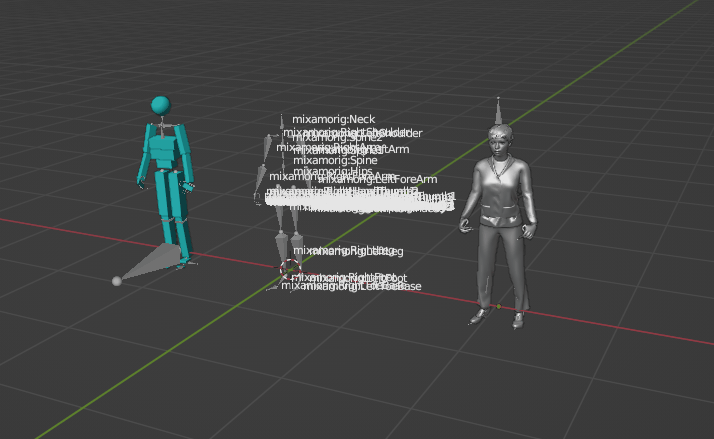360 Production
Learning Resources
Brief: To explore how to capture and utilise volumetric data to digitise a performative piece of dance that could be viewed in VR.
Background and Introduction
This project is an exploration on how we could capture volumetric data (3D) information from performers / dancers using tools and equipment that are readily available and within a set budget, it is important to ensure that this process is as unobstrusive as possible to the performers and streamlined. At the time of writing this we don’t have access to volumetric cameras as such the decision was made rather early on to explore similar techniques and tools in this case motion capture and 3D scanning in combination.
Whilst motion capture suits and markers would wield greater reliable results they are often costly and restrictive and would not suit all performers, we opted for a marker-less tracking solution using an array of cameras (iPhone XR’s) synched together in real time and using video AI algorithms to track commonality features i.e. legs, arms, head e.t.c.
The Process
We opted to use marker less tracking as our capture method as such we required multiple cameras to be synched together and to be able to be processed by a cost effective and readily available tool, we opted for Move AI based on its positive reviews and more accessible toolset over Rokoko video as to allow for quick setup and processing.
In our test shoot we had 3 iPhone XR’s in a triangular orbit around the subject (ideally would use more cameras as more cameras = wider ‘play’ area and more subjects to be tracked at once) synched to an iPad which was acting as a remote monitor / controller for the application. The iPhones were networked to the host (iPad) and positioned to ensure that all of the subject was in in frame in each lens and in line of sight of each other.
The performer then calibrated the cameras by clapping and moving around to act as a synch point.
We aimed to test multiple variations of the tracking capabilities to see how areas such as occlusion would be handled and interpreted by the video to motion tracking processing as such a variety of positions and motions were trialled. You may also notice in the pictures we covered any reflective surfaces as too not confuse the video interpretation which was looking for the humanoid structure.
This recording was then sent to Move AI website via the host device and approximately ~15mins later the skeletal data (mo-cap data) was processed, we opted to use the Mixamo skeletal structure for compatibility reasons with other tools such as Blender and Unreal which would be used further down the pipeline.
< This recording generated a skeletal framework which we could then via the Move AI website download as a set of animation keyframes and rigged structure to be used in modelling and game engines at a later stage. We could swap this skeletal rig with any model as long as the joint names remain the same.
3D Scanning
Now we had the motion data we needed the actors image to be captured and rendered in 3D, during our tests we used photogrammetry techniques due to equipment limitations at the time and keeping to our non intrusive workflow on the subject. Approximately 200 photos were taken and using RealityScan (iPad application) processed into a 3D model. This 3D Model would later be downloaded as an .fbx model and optimised as to reduce poly count and thus strain on computing process.
This 3D capture was not perfect but for the purposes of testing served its purpose, we got the actor to stand in a T-Pose as to make rigging easier when mapping it to the motion capture skeletal data from previous steps. This model after being optimised in blender was then uploaded to Mixamo website using its character rigging tool to add key points (chin, wrists, knees e.t.c) and cause we exported mo cap data as Mixamo skeletal structure this process was made ever more simple later. Once this rig was generated we then downloaded this updated model now tin attached skeletal structure into blender and assigned skeletal animation keyframes to this rigged character.
Work still to do:
Improve 3D scanning workflow / reduce file sizes
Speed up remapping and troubleshooting i.e. Bone renaming
Increase capture radius and number of actors
Import into different environments






